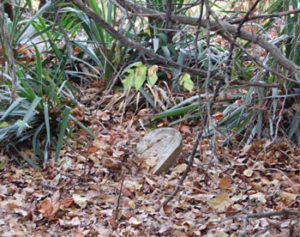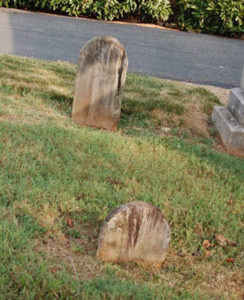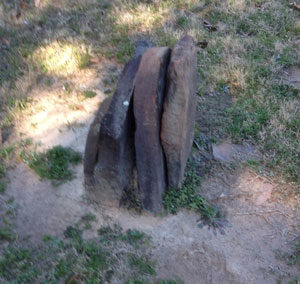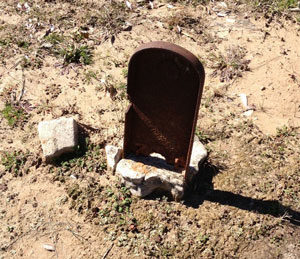One morning in 1862 fifty-seven year old Confederate sympathizer Arthur Matthews was called out of his home near Warsaw, Missouri. A group of Unionist led him down the road where they executed him and left his body in the road. Out of fear of retaliation, none of the neighbors came forth to assist in the burial; Matthews’ widow and one daughter did the task, burying Mr. Matthews under a tree in the yard.
Two years later on of the Matthews’ sons died of yellow fever at Sabine Pass. James C. Matthews was hurriedly buried in an unmarked grave near the post. Yellow fever was such a dreaded disease victims were interred as soon as possible.
Sometime in the late fall of 1865, Union supporter William Mathew Denning was in his field along White Oak Creek in what is today Franklin County, Texas. An unidentified person, believed to have been one of the returning Rebel soldiers who laid siege to Sulphur Springs and created terror and mayhem over northeast Texas, killed him. Denning’s wife and children hastily buried the body before fleeing to safety at Canton in Van Zandt County.
Alexander Marion Seay, his wife, six children, and mother, left Whitfield County, Georgia, in the fall of 1872. Seay was a crippled Confederate veteran seeking better land in Texas. The family arrived in Collin County, Texas, about Christmas time, but without the grandmother. An elderly and somewhat frail woman, widow Seay evidently died along the way. Once again, there was no time for a proper funeral or burial. Probably only stones or tree stumps marked her grave.
All of these are my ancestors. I can only hope there were prayers said for them. With the exception of Arthur Matthews, no family member knew where the gravesites were. Which brings me to a subject near and dear to my heart, abandoned or unknown cemeteries that dot the countryside and cities of America.
A cemetery is defined as a site designated to be used for the internment of human remains in the ground. A cemetery can contain only one grave or hundreds. Some are immaculate while others lie in wooded isolation along White Oak Creek. It is the latter that concern me and countless others interested in our heritage.
The Texas Historical Commission has an exemplary staff that specializes in abandoned cemeteries (www.thc.Texas.gov/cemetery). Recently I attended an excellent session for County Historical Commissions. We in the Hunt County Historical Commission are very interested for a very good reason.
With all the new developments around here, it is extremely important to locate and identify any and all of these cemeteries. If you know where one is, please contact me. We need to get explicit directions from the courthouse to the cemetery, photograph what is there now, and list it in the deed records at the County Clerk’s office. There is no fee, and you do not have to do this alone. Several members of the Historical Commission are adept at this task. We will help you throughout the procedure. So as the ads on television says, don’t wait any longer, contact us today. Let’s make a commitment to protect our heritage.




